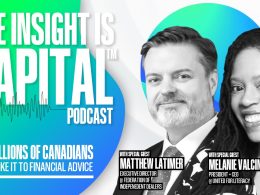by Liz Ann Sonders, Chief Investment Strategist, Jeffrey Kleintop, Kathy Jones, & Kevin Gordon, Charles Schwab & Company Ltd.
Diverging economic data and changing expectations for rate cuts have continued to complicate the market outlook.
Listen to the latest audio Schwab Market Perspective.
As we move into the second half of 2024, economic and market expectations have increasingly diverged. Inflation appears to be moderating, but mixed signals on the strength of the labor market and other economic areas have made it hard for investors to gauge when the Federal Reserve might begin to cut short-term interest rates. Other major central banks are likely to cut their policy rates earlier than the U.S., although we still expect one to two Fed rate cuts this year. We believe inflation will continue to slow, but not in a straight line, potentially driving continued market volatility.
U.S. stocks and economy: Diverging paths
Certain segments of the U.S. economy and stock market have experienced stronger recoveries this year than others, with an increasing number of "bifurcations" developing in the economic data.
For example, after clear decelerations in both services and manufacturing over the past couple of years, services have reaccelerated, as you can see in the chart below. There was hope around manufacturing's recent move back into expansion, but it was short-lived.
Services' reacceleration

Source: Charles Schwab, Bloomberg, ISM (Institute for Supply Management), as of 5/31/2024.
The Manufacturing ISM Report On Business and the Services ISM Report On Business (formerly the Non-Manufacturing ISM Report On Business) are based on data compiled from purchasing and supply executives nationwide. Readings above 50 indicate expansion in activity and below 50 indicate contractions.
Looking ahead, we expect choppier patterns for both services and manufacturing, with any coming weakness in the labor market showing up more on the services side than on the manufacturing side.
Another example is the widening spread between two monthly surveys published by the Bureau of Labor Statistics (BLS): the establishment and household surveys. The former is derived from the BLS survey of companies’ payrolls—that is, how many jobs have been created or eliminated—and suggests that 6.9 million jobs have been created during the past two years. However, the latter—from which the unemployment rate is calculated—suggests the rate of job growth has been less than half that, at 3.2 million. For what it's worth, the household survey has tended to be more accurate at important turning points in the cycle (in both directions).
Household survey versus payroll survey

Source: Charles Schwab, Bloomberg, Bureau of Labor Statistics, as of 5/31/2024.
Data indexed to 100 (base value = 12/31/2019). An index number is a figure reflecting price or quantity compared with a base value. The base value always has an index number of 100. The index number is then expressed as 100 times the ratio to the base value.
Amid these and other divergences in the data, expectations have fluctuated regarding when the Federal Reserve may begin to cut interest rates. We believe inflation will continue to slow, but with bouts of volatility, leading to jumpy expectations around Fed policy. Absent a swift move down in core inflation (unlikely), the green light for the Fed to begin easing policy likely rests with the labor market (so far only showing minor cracks).
In terms of the stock market, stable Treasury yields should be supportive of the stock market, but a sharper move either higher (driven by an inflation reacceleration) or lower (driven by much weaker economic growth) would likely lead to weaker performance and/or higher volatility. In other words, a "Goldilocks" scenario would continue to be supportive, but the likelihood of that persisting is diminishing.
Given the potential for volatility, we suggest focusing on companies with high-quality attributes, such as strong profit margins, upward revisions to earnings estimates, and high interest coverage ratios. These companies may be better positioned to weather potential ups and downs.
Fixed income: Watching the Fed
We came into 2024 expecting the Federal Reserve to cut its benchmark policy rate, the federal funds rate, three to four times this year, for a cumulative total of 75 to 100 basis points (or 0.75 to 1 percentage point) from its current range of 5.25% to 5.5%. However, given the resilience of the economy, stubbornness of inflation, and guidance from the Fed, we have lowered that to one or two rate cuts of 25 basis points each.
We also expect continued volatility. Even after the Federal Reserve pivots to rate cuts, the reason for the cuts will be important to assessing the magnitude of easing going forward, with inflation and employment data likely to be the key indicators.
For fixed income investors, the prospects of positive returns look good in the second half of 2024. One of the main reasons is that coupon rates—the current income paid on the bond—are at high levels. Higher coupon rates can offset price declines because the total return an investor receives is a combination of the income stream plus or minus the price change. The higher the current income, the less significant the price fluctuation tends to be to the investor's total return.
We also suggest looking beyond Treasuries and considering extending duration. With short-term interest rates higher than long-term rates in the Treasury market, many investors are reluctant to extend duration. However, staying in very short-term investments presents reinvestment risk. If short-term yields fall in the future, which is likely with Fed rate cuts on the horizon, then those 5%-plus yields will not be available when it's time to reinvest the funds.
However, there are areas of the fixed income markets that can provide yields as high as short-term Treasuries at longer maturities. As the chart below illustrates, an investor looking to lock in yields above 5% for a longer time frame could choose investment-grade corporate bonds or government agency mortgage-backed securities. Those willing to take more duration and/or credit risk could consider preferred securities as well. In other words, it's possible to build a portfolio that generates yields over 5% for seven to 10 years, barring default.
Various fixed income investments have yields near or above 5%

Source: Bloomberg, as of 6/3/2024.
Indexes represented: Treasury bills = Bloomberg US Treasury Bills TR Index; Intermediate-term Treasuries = Bloomberg US Intermediate Treasury TR Index; U.S. Aggregate Index = Bloomberg US Aggregate TR Index; Agency MBS = Bloomberg US MBS Index; IG Corporates = Bloomberg US Corporate Bond Index; Preferred Securities = ICE BofA Fixed Rate Preferred Securities Index. Yields shown are the average yield-to-worst. Yield to worst is the lowest possible yield that can be received on a bond with an early-call provision that does not default. Indexes are unmanaged, do not incur management fees, costs and expenses and cannot be invested in directly. Past performance is no guarantee of future results.
Extra yield comes with more risk when compared to Treasuries, which are backed by the full faith and credit of the U.S. government. Nonetheless, we believe the risk of a default in investment-grade corporate bonds or government agency mortgage-backed securities is low in a diversified portfolio.
Global stocks and economy: Building on recovery
After a quarter of the world's 45 largest economies fell into recession in 2023, the first half of 2024 brought a global economic recovery, helping to lift the MSCI World Index by nearly 10%. While we expect the second half of the year to build on this recovery, it may be characterized by a divergence in central bank policy—with some poised to cut rates earlier than the U.S. Federal Reserve—and election-related risks that have the potential to increase stock market volatility.
The widening divergence between the outlook for rate cuts by the Fed and those of other major central banks has strengthened the dollar so far this year, because higher interest rates can make holding a currency more attractive. With non-U.S. central banks likely to cut more aggressively, stock valuations have risen, offsetting the drag on performance from a falling currency for U.S.-based investors.
Elections during 2024 may see populists across the globe gain ground and shift policies away from free trade and pro-market reforms, potentially contributing to market volatility. Mexico (the U.S.'s biggest trading partner) and the European Parliament have just held elections. The U.K. will hold an election in July, and—of course—the U.S. holds its election in November. Markets could respond negatively to an outlook of rising tariffs and trade frictions that might potentially boost inflation and weigh on exports.
Yet it is significant that "my country first" trade policies tend to involve more than just tariffs—increasingly, they include incentives to support domestic industries: Subsidies, tax breaks, accelerated depreciation, and research-and-development grants could result in more capital spending and production, potentially fostering more domestic growth and less inflation for domestic goods and acting as an offset to tariffs increasing import costs. While the overall trends may be increasingly clear, the outcomes for investors are not. There will be a lot to monitor in central bank actions and indications of future policies through the election outcomes during the second half of 2024.














